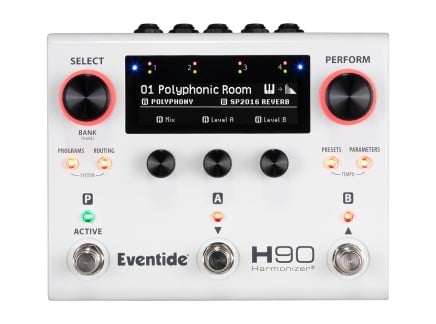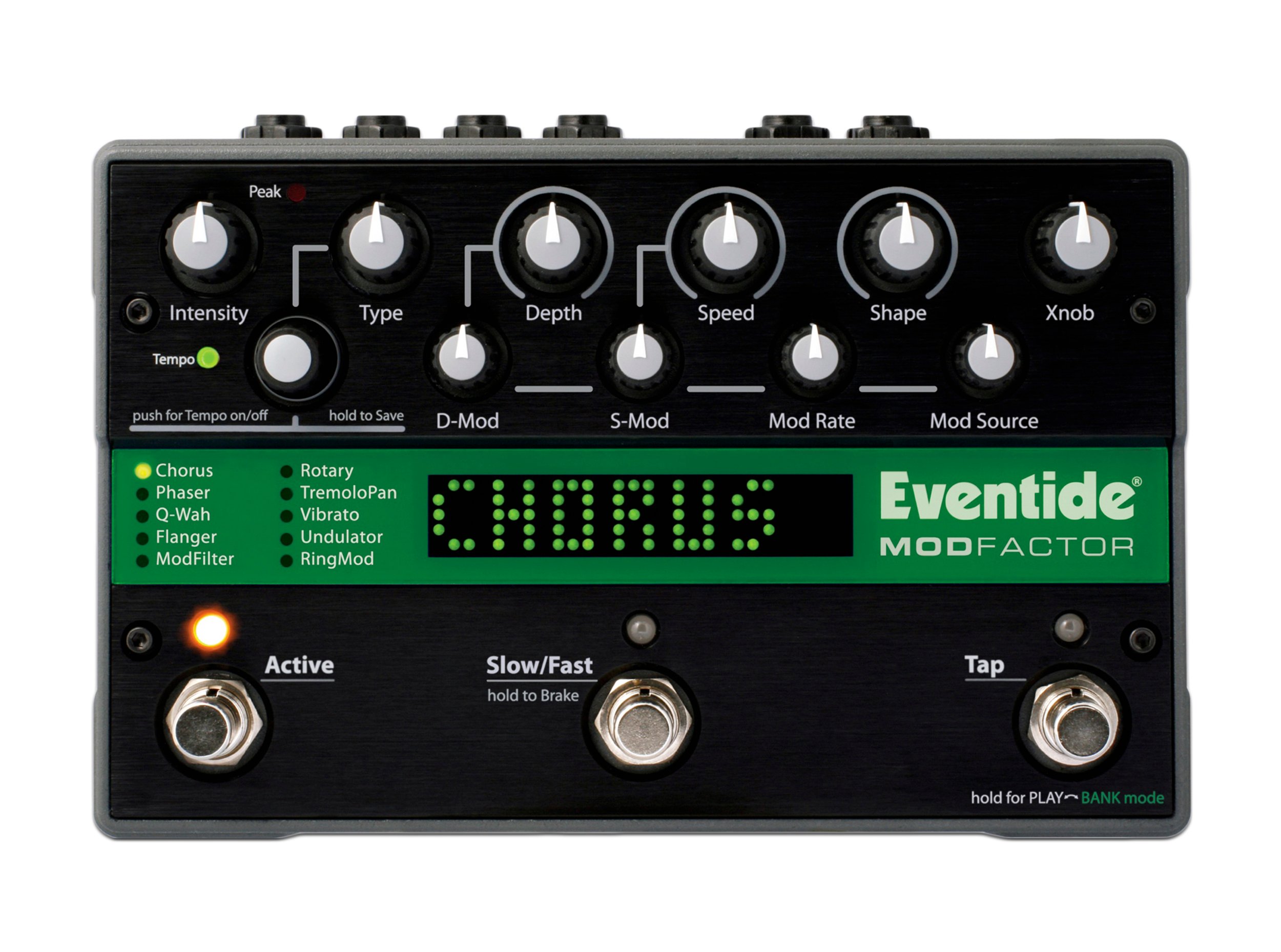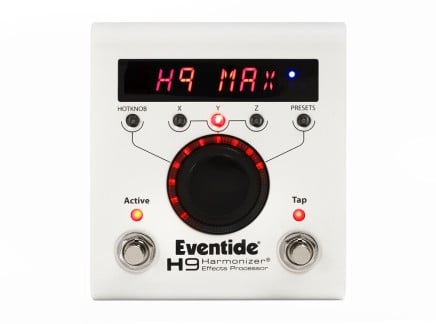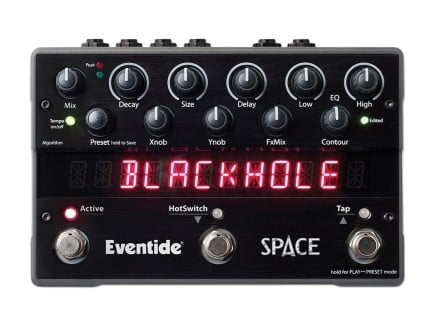It's no secret that we're big fans of Eventide here at Perfect Circuit. Between their studio gear, plug-ins, and effects pedals, we're often enhancing the sound of our favorite synthesizers, drum machines, and other instruments with luscious Eventide delays, reverbs, and pitch effects. After all, they've been churning out superb sources of sonic inspiration for over 50 years now, and they have more ideas than ever to push the art of effects processing forward into the future.
Today, we're excited to commemorate the release of the newest Eventide effects pedal: the H90 Harmonizer. Building on the modern classic H9 platform, the H90 elevates Eventide's pedal line to new heights in what we think is one of the most powerful compact effects processors ever conceived. With loads of I/O and the capability of running two effect algorithms simultaneously (with generous routing options), H90 is hands down Eventide's most powerful effect pedal to date.
Take a look and listen to some of what the H90 has to offer in our video with Brian and Jacob above, and read on for a quick dose of Eventide history before getting into the specifics of what makes the new Eventide H90 pedal especially captivating.
Eventide's Pedal History: A Story of Premier Effect Processing
We've previously covered Eventide's extensive history in a two-part article series, from their earliest rackmount units to their current catalog of pedals, plugins, and more. Though the H90 draws from Eventide's entire legacy of rich time-based effects, it makes the most sense to focus discussion here on their Harmonizer line as well as their previous pedals to get an idea of where the H90 is coming from.
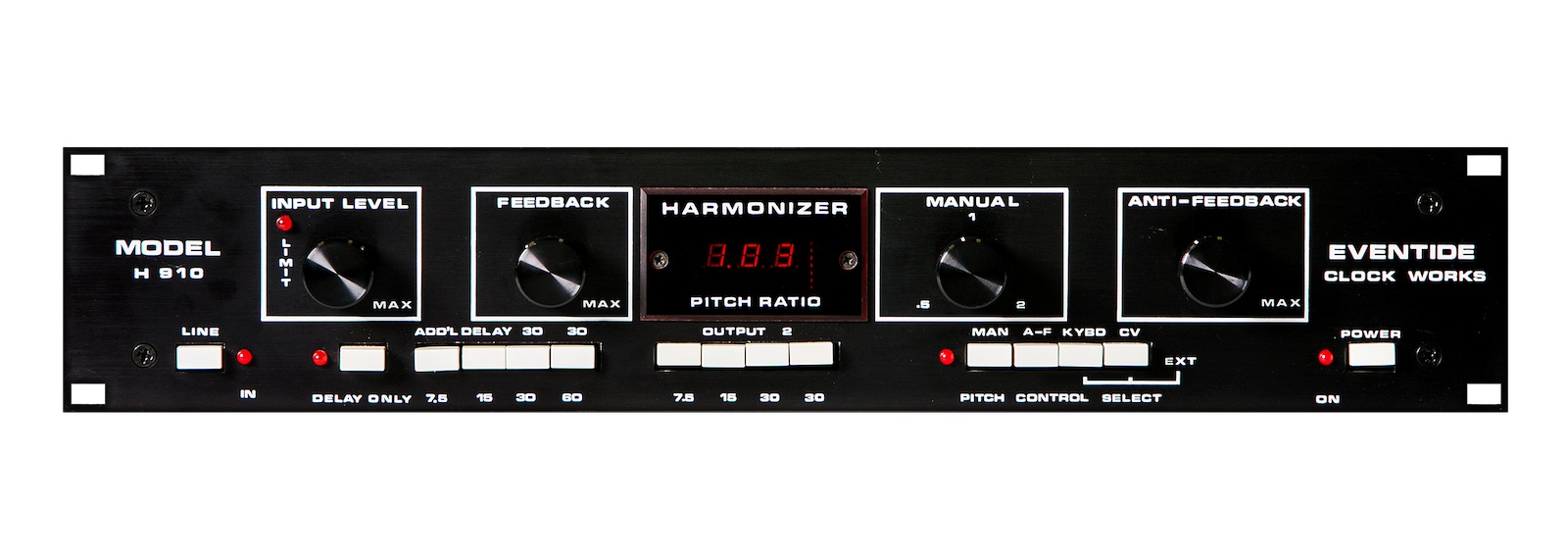 The original Harmonizer: Eventide's H910 (image courtesy of Eventide)
The original Harmonizer: Eventide's H910 (image courtesy of Eventide)
By 1975, Eventide had already produced a handful of clever studio devices employing the use of cutting-edge digital technology, but it was the release of the H910 Harmonizer that put them on the map. Put simply, the H910 was a digital delay unit with additional features that made it capable of pitch-shifting, flanging, and other effects that were well ahead of its time—harmonization was only one of the many things it could do. Later units like the refined H949 and the iconic powerhouse H3000 furthered the capabilities of the Harmonizer line and solidified the presence of Eventide effects in studios across the world.
But it wasn't until 2007 that Eventide began rolling out its first line of guitar pedals: the Factor series. With pedals, Eventide was finally making the leap into a new market, and the sound of their renowned effects became more attainable to musicians across the world. Packaged into pedals of dedicated effect categories, the PitchFactor, ModFactor, TimeFactor, and Space respectively presented a formidable assortment of pitch, modulation, delay, and reverb effects.
But perhaps the best thing about these pedals is that they didn't just make guitars shine with Eventide sparkle—these pedals found their way into the hands of synthesists, producers, and other instrumentalists or musicians seeking the best of what Eventide has to offer outside of pro-grade studio gear. Even now, 15 years later, these pedals hold up remarkably well—people are still turning to them for their flexible parameterization and, of course, their phenomenal sound.
No one would cast any doubt on the quality of the Factor line's algorithms, but Eventide knew that they could elevate their pedal game again within a few years. That's exactly what happened in 2013 with the release of the H9 Harmonizer.
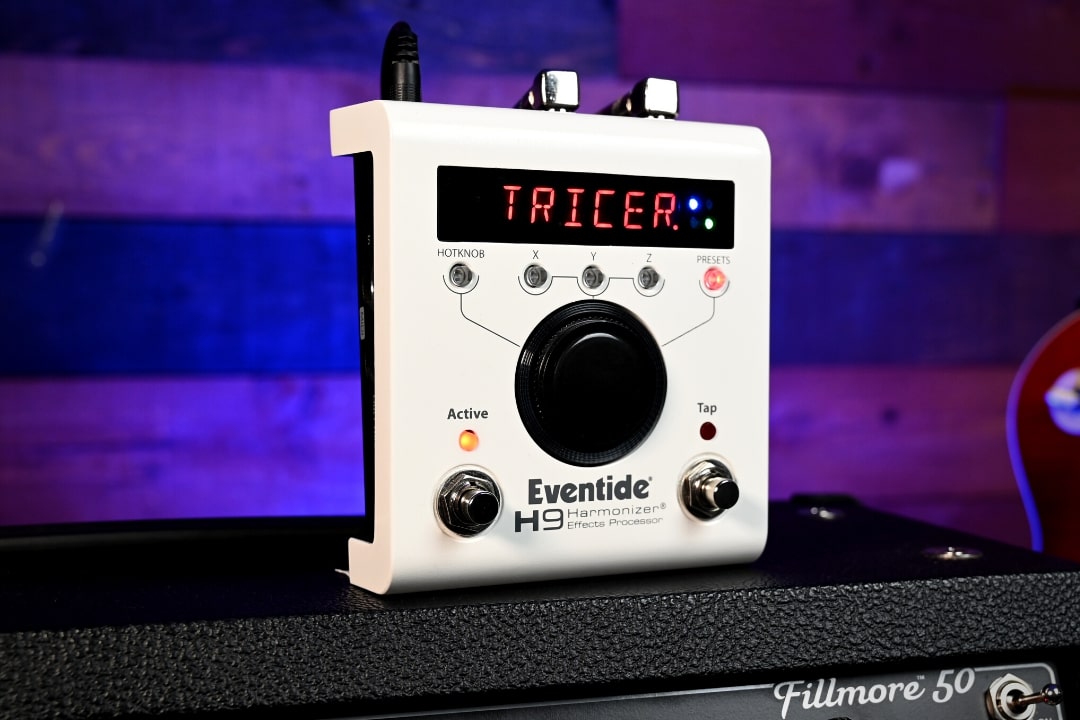
This pedal could be seen as a culmination of Eventide's work up to that point in time, for its designation as a Harmonizer places it into the same family as the legendary H910, H949, and H3000. And not only did H9 pack in some new, unique effects of its own but it could also run every algorithm found on the Factor pedals. At one moment, H9 could be the infamous Blackhole reverb, and in the next provide authentic H910/H949-style harmonization and detune, but then shift over to UltraTap, Resonator, or any of the other H9-exclusive effects. Thus, just like all other members of Eventide's harmonizer family, H9's capabilities extend well beyond delay and pitch effects, but this flexibility was now packed into a compact, pedalboard-friendly package.
In addition to the effects themselves, H9 represented another leap forward in terms of interfacing and control. The pedal itself is extremely compact for all that it can do, and as such relies on a menu-based system with a handful of parameters and a central encoder. The encoder can also be used for HotKnob functionality, which offers macro-level control over multiple parameters of an algorithm at once.
Given its minimal interface, H9 really encourages the use of presets, which may be stepped through in sequential order using the Tap footswitch, or recalled remotely with MIDI program changes. But to make preset arrangements easier, and to keep all parameters accessible in a studio or performance environment, Eventide released the companion H9 Control app for Mac, PC, iOS, and Android devices. Whether you were connected via USB to your computer or using Bluetooth with your tablet or mobile device, it was easily possible to craft new presets, try out new algorithms, and configure nearly every aspect of your H9 through the app.
It's no surprise that H9 was a huge success for Eventide, and it was the source of several spin-off products. For the producers and engineers out there, several of the algorithms from the H9 and Factor pedals are available as software plugins, like Crystals, ShimmerVerb, and more. Four of these were also expanded into their own line of streamlined single-algorithm pedals, affectionately known as the dot9 series: Blackhole, UltraTap, MicroPitch, and TriceraChorus. Supplementing an H9 with one of these pedals means you could free up your H9 for other purposes, and the algorithms feature slight enhancements to benefit from being built into a standalone package, such as the MicroPitch's new envelope follower to control the delay times.
Needless to say, the H9 has developed its own legacy after being in production for nearly 10 years. But once again, Eventide felt like it was time to raise the bar, bringing us into the age of H90.
Overview of the H90 Harmonizer
H90 is, without a doubt, Eventide's most powerful pedal to date. Effectively two H9s in one, H90 can run two algorithms at once, with an impressive 62 different algorithms to choose from. Every effect from the H9 returns, and where possible Eventide included enhancements to old algorithms to keep them in line with versions found in the dot9 pedals or plugins. Though now with the ability to run two effects together, you don't need two separate pedals to run MicroPitch into Shimmer, HotSawz into Harmadillo, or Looper into Band Delay. And as a nice touch, there's seamless spillover when changing effects Programs, so delays and reverbs between patches will beautifully blend into each other.
Though we love the classic H9 algorithms, H90 also launches with ten new algorithms never before seen in Eventide pedals. Three of these algorithms are tweaked versions of effects found in classic pieces of Eventide rack gear: Instant Phaser, Instant Flanger, and SP2016 Reverb. As for the seven new H90-exclusive algorithms, you've got everything from classic effect emulations to cutting-edge, modern processing:
- Weedwacker: inspired by the classic Tubescreamer overdrive
- Bouquet Delay: bucket bridge-style delay
- Even-Vibe: stereo Uni-Vibe with envelope followers
- Head Space: inspired by the Roland Space Echo tape delays
- Wormhole: pitch-warped, heavily modulated reverb
- Prism Shift: three-part arpeggiated pitch shifter
- Polyphony: polyphonic pitch shifting with delay
Polyphonic pitch shifting, you say? Indeed, the aptly named Polyphony algorithm includes remarkable polyphonic pitch shifting capabilities courtesy of Eventide's proprietary SIFT technology, short for Spectral Instantaneous Frequency Tracking. And we have to say, with bassists and guitarists on our team that have been disappointed by the tracking of supposedly accurate pitch-shifting pedals in the past—it really is that good. SIFT is a relatively new Eventide effort, having been found in their recently updated Physion MkII plug-in, but we're super stoked to see it appear in hardware form on the H90.
H90 features a completely overhauled interface in comparison to the H9, and should offer more immediate access to settings and parameters within the pedal. Most notable is the addition of an OLED display, and the single HotKnob has been replaced by two large encoders on either side of the screen. There's also an additional footswitch and three QuickKnobs for parameters below the screen, along with a number of LED buttons for configuring algorithms, presets, and more.
With two algorithms available at once, it's important to understand how H90 organizes effects, Presets, and Programs. At the top level, a Program will load two effects Presets, denoted as A and B, and each Preset will load up an algorithm and all of its associated Parameters. Programs themselves are organized into Lists, with 99 Programs per list sorted into 33 banks of three. H90 boots up in Select mode, where you can scroll through all Programs in a list with the left encoder or step through them sequentially with the middle and right footswitches. But using the associated LED buttons, you can easily browse through Programs, Presets, and effect Parameters to change any aspect of your sound at any level of the H90's hierarchy.
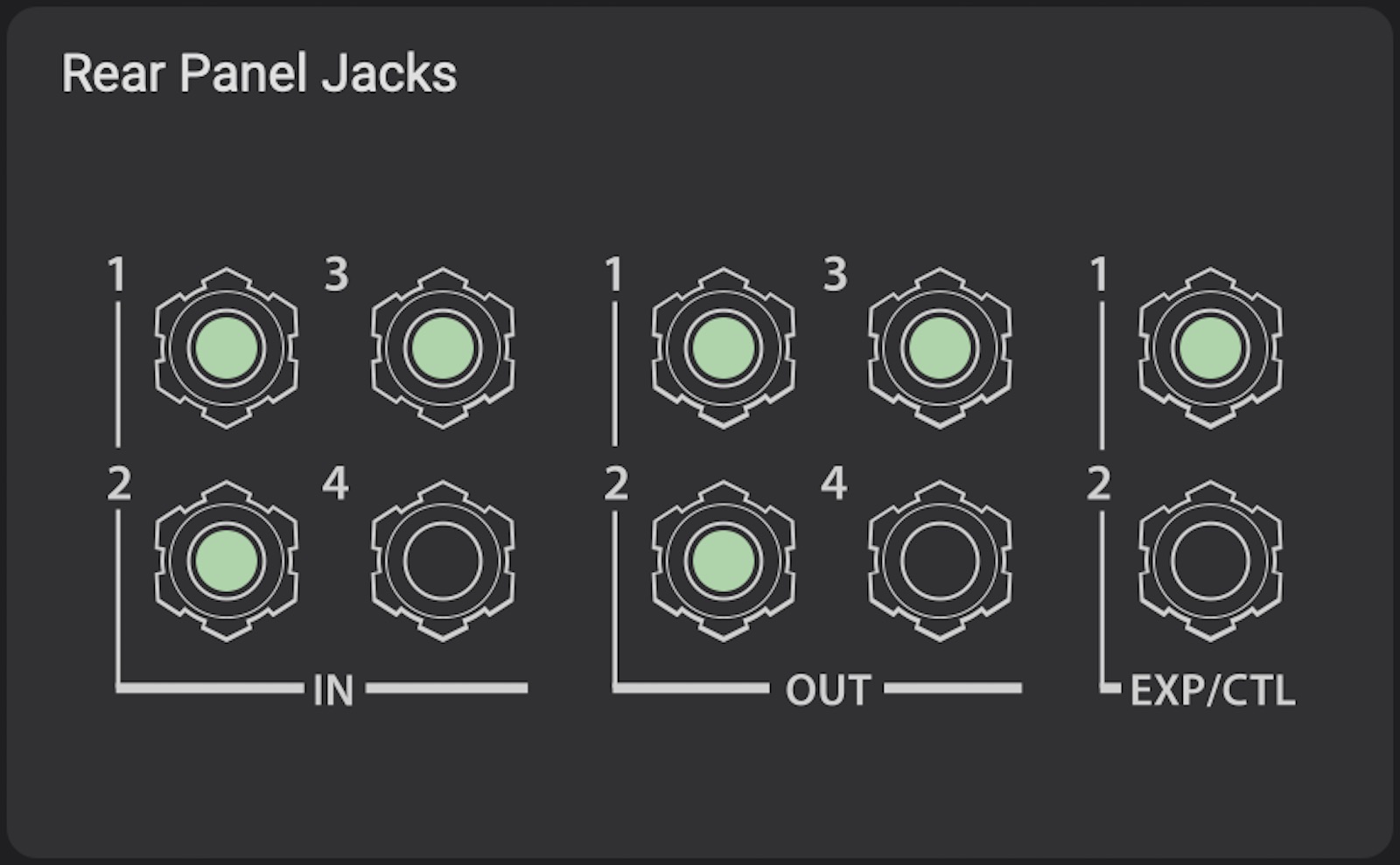
As for the I/O, there are four audio inputs and outputs, along with two expression pedal jacks and 5-pin DIN MIDI in and out ports. For maximum flexibility, the H90 can support a number of different internal and external audio routing configurations. Simply tap the Routing button, and you're presented with a menu that displays the current arrangement of the algorithms and the insert loops if enabled. You can easily switch between series and parallel configurations, and swap the algorithms between the A and B slots with a tap of the leftmost QuickKnob.
By default, H90's additional I/O can be used as two mono inserts or a single stereo loop. With these insert loops come plenty of freedom in placing them in your signal path, whether before, after, or in between the algorithms—even as a separate parallel path if so desired! Alternatively, jump into the Global settings and enable Dual Mode, which totally separates the inputs and outputs into two independent stereo paths. From here, you can explore four-cable-method routing with your amp, quadraphonic effects, independent processing of two instruments, and a whole bunch of other ideas.
Understanding the H90's Performance Features
Of course, the biggest draw to the H90 is its capabilities as an effects processor and creative audio routing tool. But it's no slouch when it comes to defining controller mappings to its many parameters. Between HotKnobs, HotSwitches, Expression pedals, Aux Switches, and MIDI, there are tons of ways to make the H90 as dynamic and interactive as you need it to be.
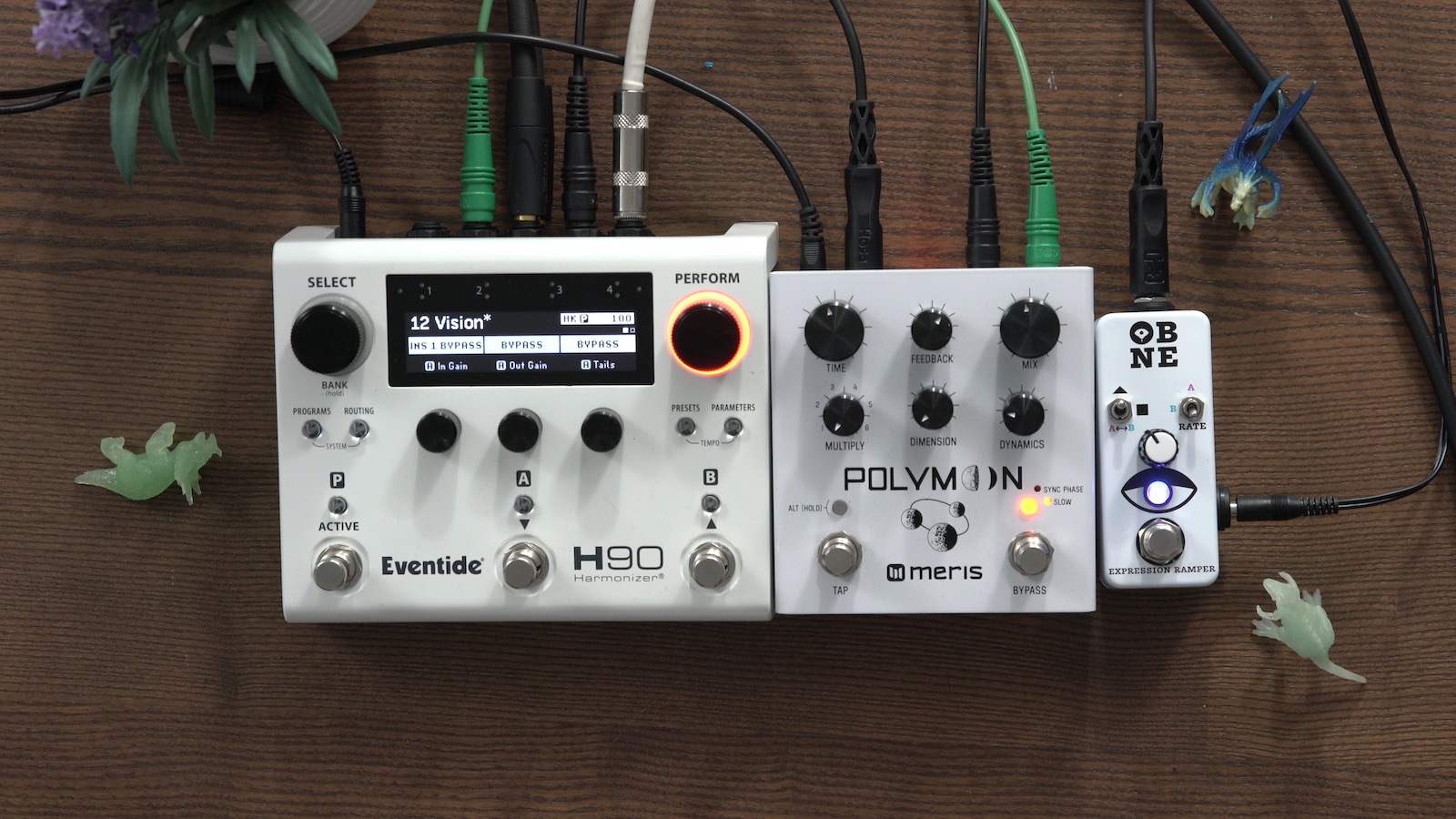
While the left Select encoder was dedicated to browsing Programs, tapping the right encoder enters Perform mode. In Perform mode, the right encoder, three QuickKnobs, and footswitches open up to assignable roles within a Program. HotKnob functionality returns from the H9, with a macro control available for both the A and B effects, as well as the global P level. The Perform encoder functions as the P HotKnob while holding down a QuickKnob allows it to be assigned to the A and B HotKnobs, or nearly any other parameter in an effect or Program. Assigning an individual parameter to a QuickKnob eliminates the need to dive into the Parameters menu and scroll through pages to find what you need.
As for the footswitches, tapping their LED button will scroll through various functions like bypass, tap tempo, or any algorithm-specific features like Freeze or Looper functions. Their available parameters will correspond to the label above the LED, so you have one footswitch on hand for P, A, and B assignments. There are also three HotSwitch controllers, which can be assigned different parameter values for instant recall—sort of like scenes or presets within your preset! Tapping the right encoder while in Perform mode will toggle between two pages of footswitch assignments, ensuring that you have at least a couple of options for how you want footswitches to affect your Programs.
When browsing the Parameters menu, pages organize parameters into groups of three, each adjusted by the associated QuickKnob beneath the display. But hold down a QuickKnob and you'll enter the Parameter Mapping menu, where you can scroll through all of the available parameters for the A, B, and Program (P) levels. And it is here that you can open up the H90 to a variety of both internal and external control sources, including HotKnob and HotSwitch assignments.
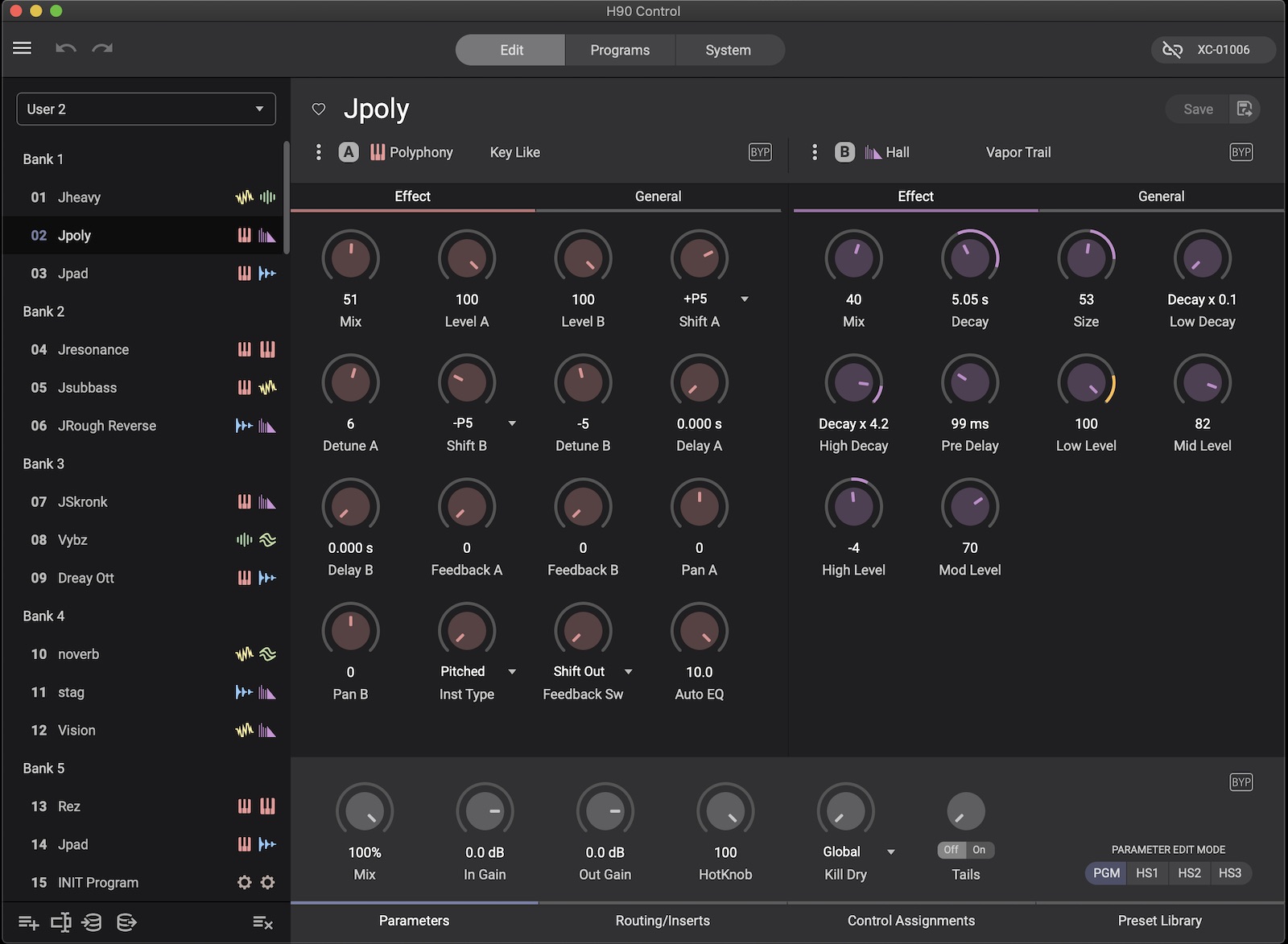 Eventide's H90 Control App
Eventide's H90 Control App
H90 is totally open to external control sources, too. The two expression ports may be configured for use with either traditional expression pedals or triple auxiliary footswitch controllers. Expression pedals offer continuous control over assigned parameters, while Aux switches have more freedom in control assignments than the onboard footswitches. There's also MIDI control via 5-pin DIN or USB-C, with extensive configuration available across programs, presets, and global settings. Within the Parameter Mapping menus, there's a super helpful Learn feature that instantly maps a parameter to the next control source the H90 receives data from, whether it's an expression pedal, aux switch, or MIDI controller change (CC) messages.
Between Programs, algorithm Presets, and Performance Mappings, there are a lot of ways that you can personalize your H90 to your needs. While you can do everything from the pedal itself, Eventide also provides an H90 Control app for tweaking every aspect of the H90 in a clean and clear graphic interface. You can create and backup Program Lists, tweak effect parameters in real-time, and breeze through the creation of controller assignments right from the Control app. If you plan on being a power-user of the H90, this app is going to save you a ton of time in creating the wildest effects patches of your dreams.
The Future of Multi-Effects Pedals
Eventide's history is one of constant refinement through the release of new products, and H90 is no different. It takes so much of what was loved about the H9 and other Eventide pedals and the amount of magic it packs into a single pedal is staggering. Even though pedals were originally intended as tone-shaping tools for guitarists whose hands were occupied with their instruments, pedals are becoming an increasingly common tool of choice for instrumentalists, producers, and engineers of all styles. Outside of plug-ins, modern pedals like the H90 are also handy for their incredible versatility and customization, both in terms of sound and functionality.
If there was ever a pedal that could hold its own against premium studio gear, H90 would certainly be one. We've had an absolute blast with the H90 so far, and we're sure it's going to be a hit with anyone who needs a compact effects processor that truly goes the extra mile.

